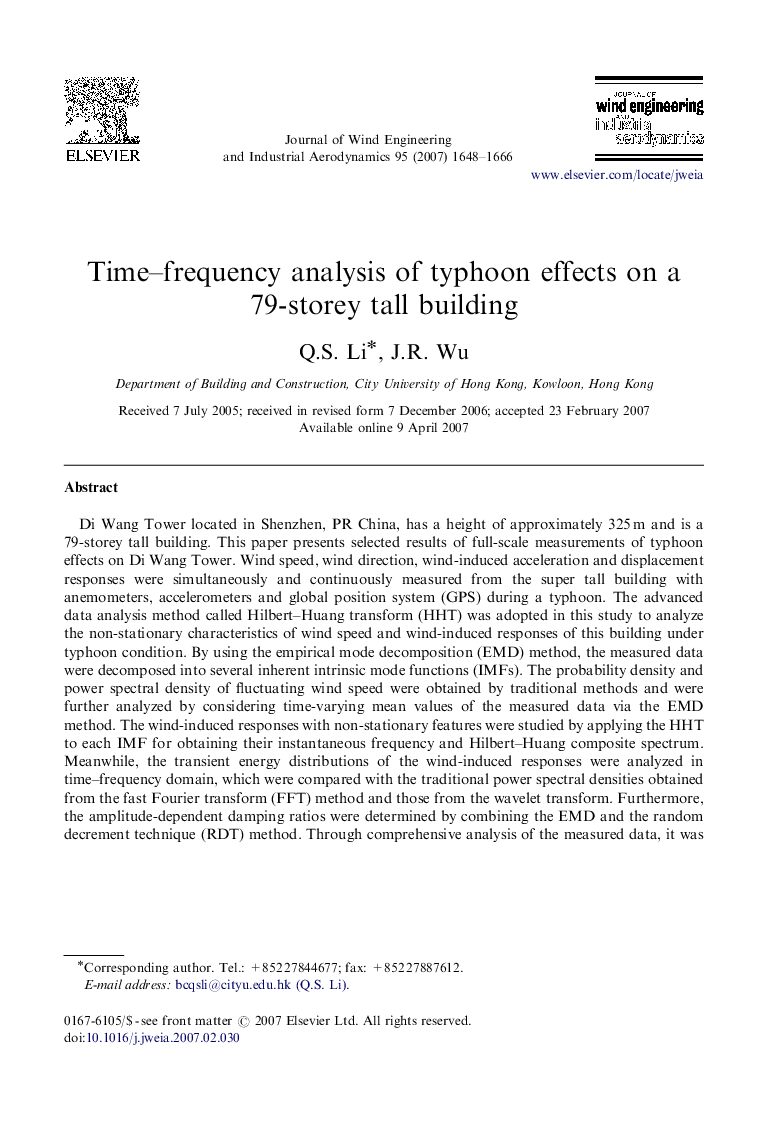| کد مقاله | کد نشریه | سال انتشار | مقاله انگلیسی | نسخه تمام متن |
|---|---|---|---|---|
| 293849 | 511210 | 2007 | 19 صفحه PDF | دانلود رایگان |

Di Wang Tower located in Shenzhen, PR China, has a height of approximately 325 m and is a 79-storey tall building. This paper presents selected results of full-scale measurements of typhoon effects on Di Wang Tower. Wind speed, wind direction, wind-induced acceleration and displacement responses were simultaneously and continuously measured from the super tall building with anemometers, accelerometers and global position system (GPS) during a typhoon. The advanced data analysis method called Hilbert–Huang transform (HHT) was adopted in this study to analyze the non-stationary characteristics of wind speed and wind-induced responses of this building under typhoon condition. By using the empirical mode decomposition (EMD) method, the measured data were decomposed into several inherent intrinsic mode functions (IMFs). The probability density and power spectral density of fluctuating wind speed were obtained by traditional methods and were further analyzed by considering time-varying mean values of the measured data via the EMD method. The wind-induced responses with non-stationary features were studied by applying the HHT to each IMF for obtaining their instantaneous frequency and Hilbert–Huang composite spectrum. Meanwhile, the transient energy distributions of the wind-induced responses were analyzed in time–frequency domain, which were compared with the traditional power spectral densities obtained from the fast Fourier transform (FFT) method and those from the wavelet transform. Furthermore, the amplitude-dependent damping ratios were determined by combining the EMD and the random decrement technique (RDT) method. Through comprehensive analysis of the measured data, it was testified that the HHT method is a promising tool for the time–frequency analysis of random signal and can serve as a flexible and effective tool for analyzing field data of wind speed and wind-induced response with non-stationary features.
Journal: Journal of Wind Engineering and Industrial Aerodynamics - Volume 95, Issue 12, December 2007, Pages 1648–1666